Neoregelia: features and rules of care
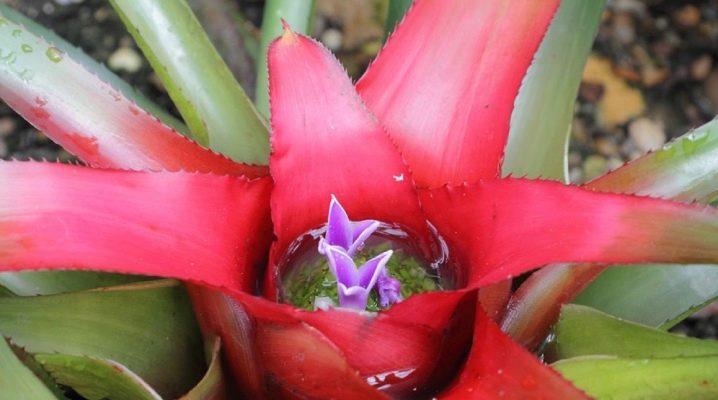
Neoregelia has many fans. And this is due not only to its attractive appearance. It is believed that a flower creates a positive atmosphere in the house, makes thoughts more orderly and in every possible way helps to optimize the vital resources of the body.

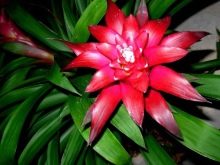
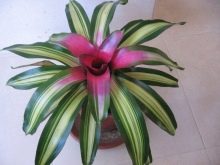
Description
The name of the flower was given in honor of the botanist-scientist who founded the Russian Society of Horticulture, Eduard August Regel - it was he who first gave a detailed description of this exotic culture. The plant belongs to the bromeliad family. The second name of this family is pineapple. Indeed, neoregelia is somewhat reminiscent of this exotic fruit. This is a herbaceous plant with bright green pointed leaves about half a meter in length and 3-4 cm in width, collected in a single dense bunch. Neoregelia belongs to tropical plants - Brazil is considered its homeland.
The flower attracts florists primarily with its unusual and bright appearance, as well as its unpretentiousness. It is considered epiphytic - it can adapt to its environment.
Under natural conditions, neoregelia grows on branches and trunks of trees, therefore it is suitable for growing hydroponically, that is, in an artificially created nutrient solution without planting in the soil.
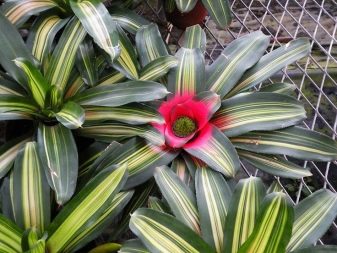
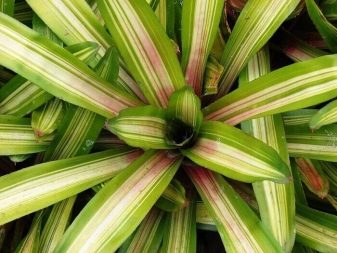
The peculiarity of the root system of this flower is such that the roots serve mainly to hold the plant itself on the surface, and not to absorb nutrients. Neoregelia receives resources for life support mainly by air, and it takes moisture from natural precipitation that accumulates in its bowl. However, neorehelia can also be grown artificially in a soil environment. That's why the flower is suitable for both botanical gardens and parks, and for home conditions.
Before entering the flowering phase, the leaves acquire a bright scarlet color, and the flowers themselves have a delicate lilac or bluish tone. There are also varieties of this plant with long striped leaves - the pattern can be neutral white, traditional green or provocative red. The flowers themselves are located in the very center of the plant and have a deep planting.
With proper care, neorehelia can grow up to half a meter in diameter and up to 30 cm in height.
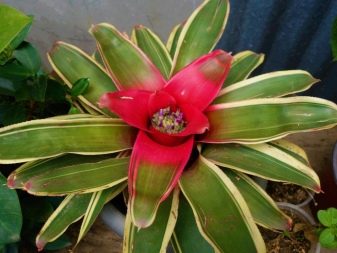

The plant usually begins to bloom in the spring. Like most plants from the bromeliad family, neoregelia blooms only once in a lifetime. Flowers appear and die off the next day. The rosette itself can bloom for several months, then dies off after the flowers.
However, before blooming, the plant produces several shoots that are located around the central parent stem. Each of the shoots eventually develops into an adult plant. If they are not seated, then over time they form a whole group of inflorescences.
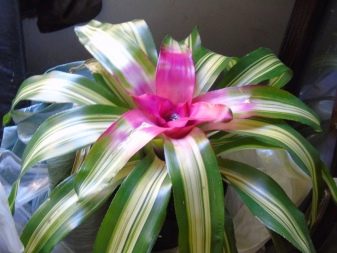

Types and varieties
The flower was discovered in the middle of the 19th century. To date, science knows about 60 different types of neoregelia. About 40 of them are grown in an artificial environment.
Neoregelia carolinae
It is one of the most popular varieties among florists. The inflorescence looks like a wide funnel about 40 cm in diameter. The leaves of an emerald green saturated color have a pointed shape about 45-50 cm long and about 3.5 cm wide.Like all representatives of neoregelia, the leaves tend to gradually change their color from green to pink before flowering, and then to bright -scarlet.Flowers about 4 cm in size are collected in spherical inflorescences. The plant begins to bloom in early summer.
An adult bush most often consists of several inflorescences, each of which has 10 to 20 leaves. Sometimes there are varieties with striped yellow leaves. But there is also a known variety of garden varieties Tricolor with stripes of three colors at once: white, green and pink.
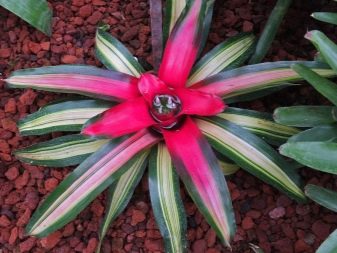

Neoregelia pauciflora
The cultivar was discovered as a cultivated plant in 1939. The height of an adult crop is about 15 cm. The inflorescence in the form of a narrow funnel consists of 10-12 leaves. The leaves themselves are pointed, similar to wide ribbons, covered with small thorns and scales. The flowers are small, about 4 cm high, have a thin pedicel, collected in inflorescences with a diameter of 2 cm. The shape of the flowers is oval, with fused petals.
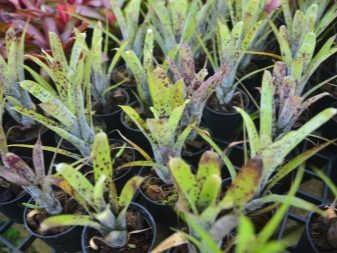
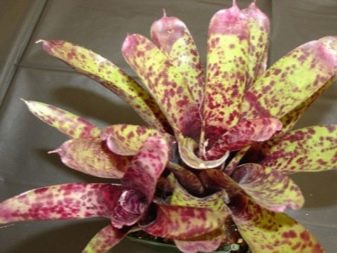
Neoregelia marble
The scientific name is Neoregelia marmorata. Just like the previous species, marble neorehelia was discovered in 1939. It can grow in height up to half a meter and more, has a wide funnel-shaped rosette, consisting of 15 leaves. Flowering begins in June... The texture of the leaves is tough, the shape is lingual, the size is 60x8 cm, the color is green, with red spots. The inflorescence is spherical, consisting of many small flowers on a peduncle. The height of the flower is 3-4 cm, the height of the pedicel is 1-2 cm. The color of the flowers can be white or pale pink.

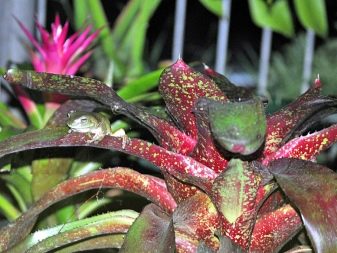
Neoregelia gloomy or Neoregelia tristis
Plant height about 25 cm, inflorescence in the form of a narrow funnel, consisting of 10-12 elastic green leaves. The peculiarity of this species is that the upper young leaves are smooth and monochromatic, and at the base of the plant there are leaves with dark stripes and microscopic scales. The length of the flowers together with the peduncle is about 4 cm. The first flowers of white and blue color begin to appear in August.
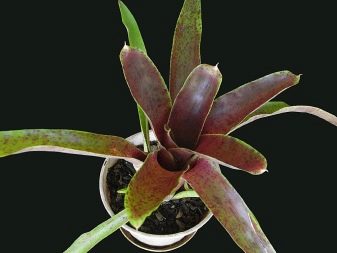
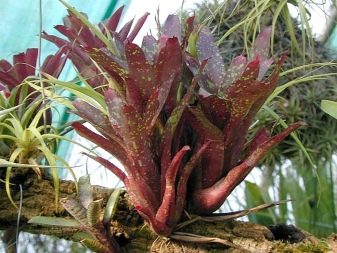
Elegant neoregelia
The scientific name is Neoregelia spectabilis. The variety was discovered in 1873. The rosette is wide, funnel-shaped. The leaves are pointed, resembling the shape of a tongue, a little less than a meter long, about 5 cm wide, with a double red-green color, scaly, with blurred gray stripes. The variety usually blooms in mid-summer, sometimes it can bloom in winter - in January or February. The inflorescence is spherical, recessed in the depth of the rosette of leaves.
The pedicel has an irregular asymmetric shape, the petals are rounded, with a twisted plate, with microscopic villi, have a bluish color.
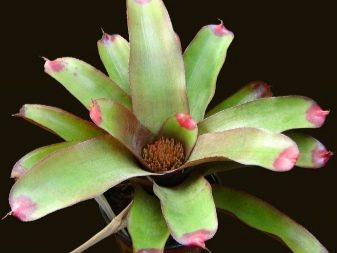
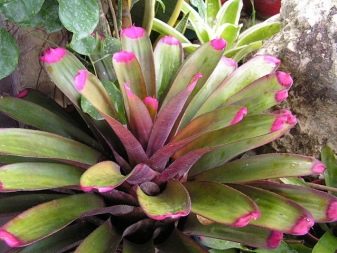
Vesiculate neoregelia
Known in academia as Neoregelia ampullacea. A distinctive feature of this variety is the inflorescence, which is deeply recessed into a rosette of leaves. In shape, the inflorescence vaguely resembles a glass. The flowering period lasts almost the entire year. The leaves are narrow and long - about 20 cm long and slightly more than 1 cm wide, have a striped pattern on a green background. The edges of the leaves are jagged, and they themselves are covered with small villi.
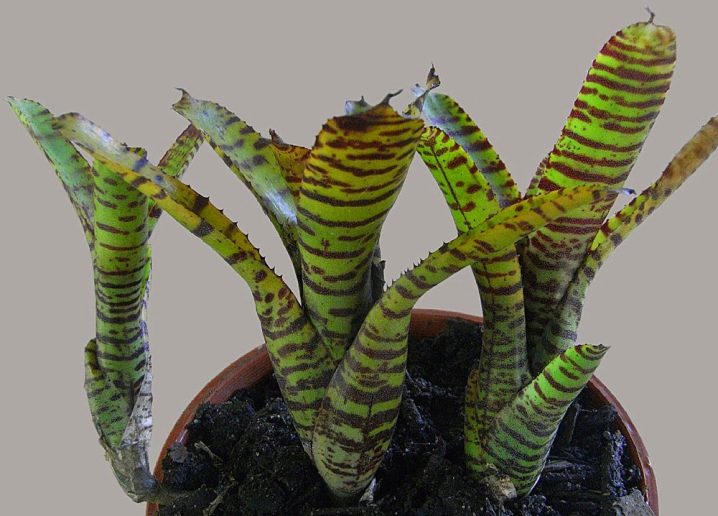
Neoregelia blue
As mentioned in the literature, Neoregelia cyanea. The variety has been known since 1939. The plant is not tall, slightly above 20 cm high. The leaf rosette is narrow, consists of more than 20 leaves. The leaves are long and narrow, of a solid green color, the texture is leathery, scaly, prickly, with smooth edges. The flowers are about 2.5 cm long, including the peduncle. The petals can range in color from pale blue or lilac to deep purple.
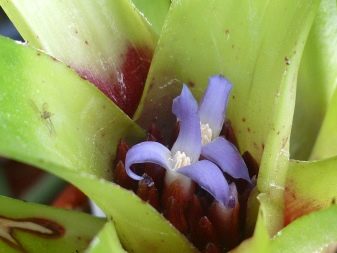
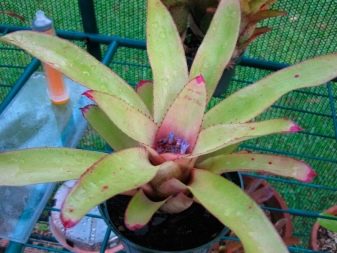
Tiger neoregelia (Neoregelia tigrina)
The first information about the variety appeared in 1954. The plant is undersized, only 10-12 cm in height, begins to bloom in March. The leaves are long, pointed at the tips, yellowish-green in color, with a striped pattern, have small brown thorns. The plant begins to bloom in early spring. Flowers are collected in round inflorescences of 10-12 flowers, which are hidden inside a leaf rosette.
The petals are in the form of an ellipse, fused into a tube at the base, are light purple in color with white edges.

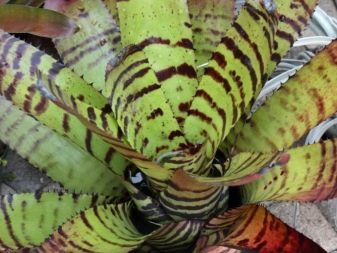
Neoregelia whiskered
In the literature, the name Neoregelia sarmentosa is used.The variety began to be cultivated in 1934. In the wild, it grows on rocky surfaces. Under cultivated conditions, the plant can grow up to 20 cm, blooms in late summer. The name "mustachioed" neoregelia was given due to its elongated processes, visually resembling a mustache. Funnels of leaves are located on them - these are the daughters of the plant.
The leaves are quite large, sometimes exceeding the growth of the plant itself and can reach up to 35 cm in length. Leaf shape is round and narrow, 2-3 cm wide. The color is deep green, gradually turning into red to the crown of the leaf, whitish scales below. The flowers are small, pure white or pale blue, traditionally collected in inflorescences.
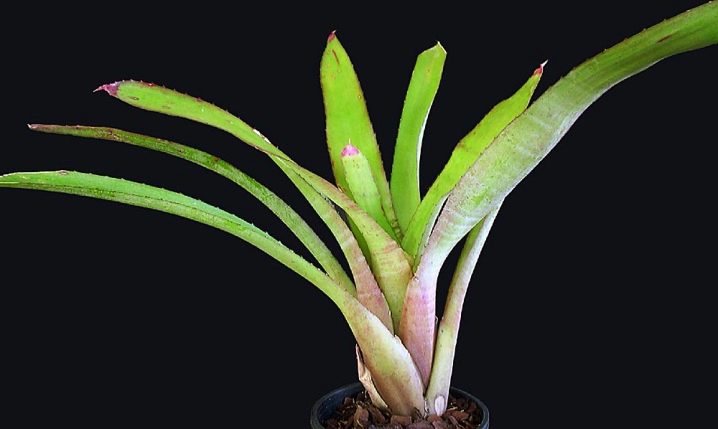
Home care
When caring for bromeliads, which include neoregelia, much attention should be paid to watering. The period of active vegetation for the plant begins in early spring - early March, and gradually dies down by October. At this time, the flower needs abundant watering. In winter, the amount of moisture should be reduced. If the temperature in the room where the plant is located is above + 20 ° C, then water is poured directly into the flower, into the leaf funnel itself. If the air in the room is cooler, then the plant is simply sprayed. At higher temperatures, the water evaporates and does not have time to stagnate, therefore, the roots of the plant do not rot and remain healthy.
Since neoregelia belongs to the category of epiphytes, then the plant feels best on a bromeliad tree, which will serve as a support for it. The tree can be purchased ready-made, or you can do it yourself from any driftwood. In order for a flower on a tree to develop correctly, it must be periodically removed from the stand and completely immersed in a container of water for several hours. Wherein it is best to use sediment water at room temperature.
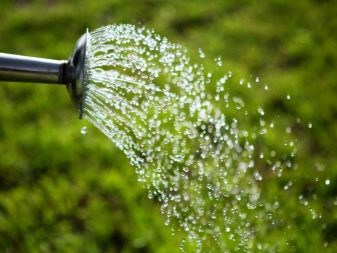

In addition to local moisture, the plant needs a high concentration of moisture in the air. For well-being, the flower needs to be in an environment where the humidity is more than 60%. This requires regular (up to several times a day) spraying of neoregelia. It is also recommended to keep dishes with water near the plant itself. Moss, pebbles or other substrates that are in the dishes with the plant must be constantly damp.
In addition to generous watering, during flowering, neoregelia needs regular feeding. Many modern stores have a sufficient range of different fertilizers suitable specifically for bromeliads, to the family of which the neoregelia belongs. And other fertilizers with nitrogen for indoor flowers are also suitable, but their concentration should be several times less, since its excess negatively affects the development of the plant.
Therefore, you should dilute them with water. The solution can be poured into the outlet itself, which will act as a reservoir. The same solution can be sprayed on the plant.
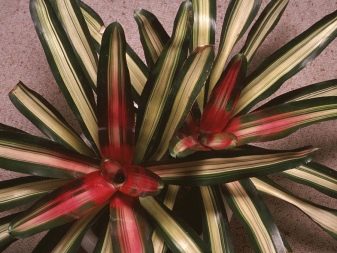
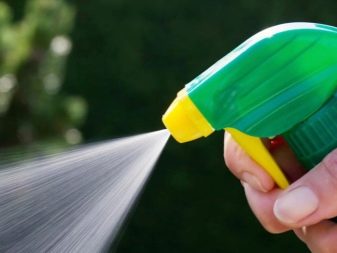
Transplant features
Neoregelia is transplanted every few years as needed. Not an adult plant is transplanted, but its young shoots, which are formed around the main outlet. In this case, you should wait until the plant fades. Many inexperienced growers make the mistake of believing that the deeper they bury the plant in the soil, the better it will take root. In the case of neorehelia, the opposite effect occurs - a plant that is too deeply planted does not receive proper air and water exchange, so the process of decay may begin.
For a new plant, it is recommended to use a mixture of bark, peat and moss. But you can buy ready-made substrate for bromeliads in the store.
The main thing is that the mixture is loose and air-permeable. Crockery with scion should be kept in a warm place at a temperature of + 25.28 ° C.
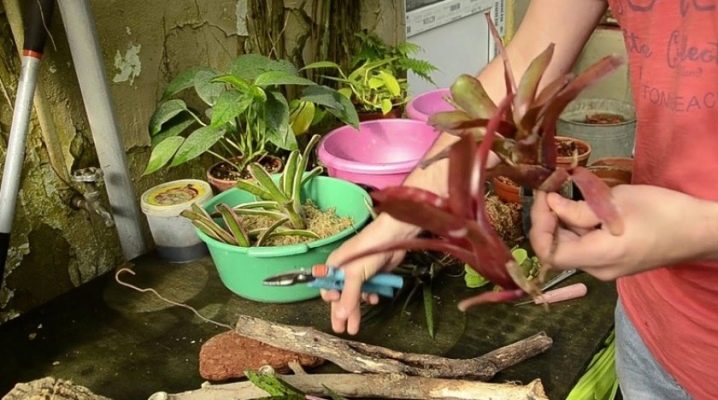
Diseases and pests
Even if neoregelia grows at home, it can be susceptible to various diseases and insect infestations.Most often, a spider mite starts up on a plant. Its presence can be recognized by the small thin cobweb formed on the plant. And also the bromeliad scale or mealybug can damage the flower. An insecticide solution will help save the plant from pest attacks. To do this, thoroughly wipe all parts of the plant with a cotton pad or napkin soaked in the solution. To ensure that the rest of the solution can be sprayed on the plant.
If the flower stands in direct sunlight, this negatively affects its growth. Brownish spots appear on the leaves - sunburn. Due to a lack of moisture or too hard water, the tips of the leaves also begin to lose color, become dry and brittle. If the leaves are pale and lethargic, the plant signals excess moisture.
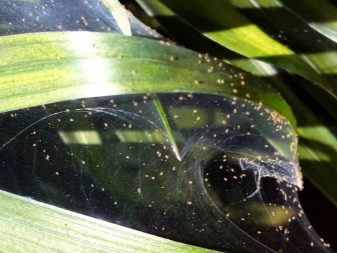
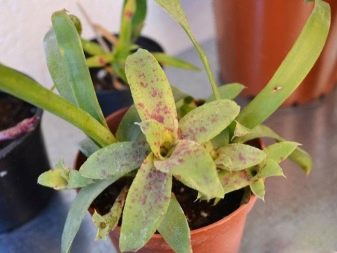
Reproduction methods
Neoregelia reproduces in two ways - seeds and shoots. In the first case, the seeds are placed in a mixture of peat and sand, moistened and covered with a film to create an elevated temperature. The first shoots appear in about 2-3 weeks. After that, the film can be removed, and after 2-3 months, the processes are seated in separate containers. The plant begins to bloom at 3-4 years of age.
When propagating by shoots, it is also necessary to create a greenhouse effect. To do this, the shoot is carefully separated from the mother plant, also placed in a special substrate and covered with a glass jar or bag. When new leaves appear, the cap can be removed.
Neoregelia has a tendency to grow in width, so the dishes for transplantation should be selected with a margin.
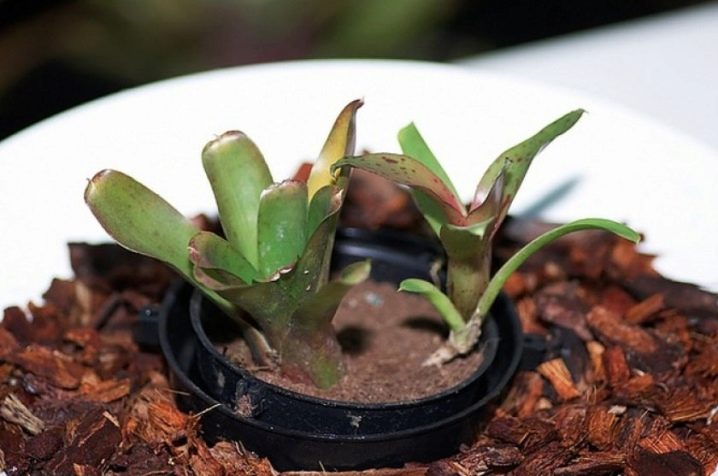
For growing and caring for neoregelia, see the next video.























The comment was sent successfully.